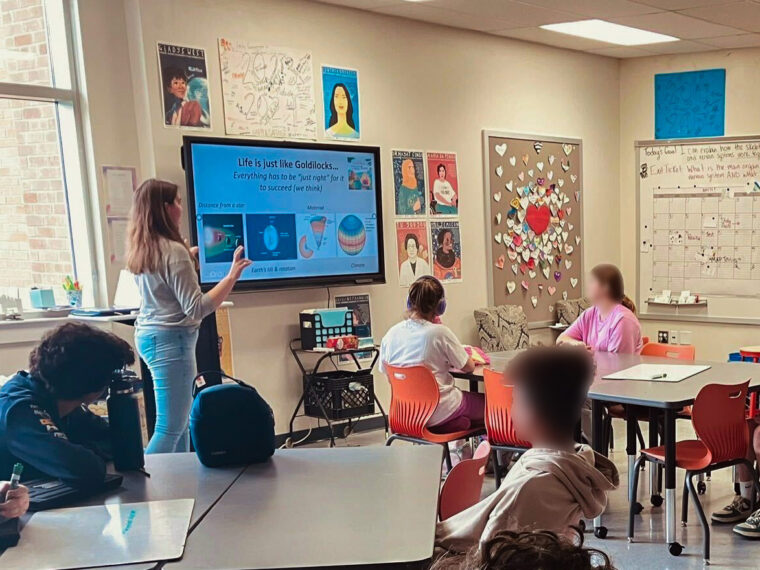Report on the Discontinuation of the Washington University Teacher Education Program and its Implications for Sustainable Development Goals
Executive Summary
Washington University (WashU) has announced the discontinuation of its undergraduate teacher education program for students matriculating in Fall 2025 and beyond. This decision, prompted by financial constraints and low enrollment, presents significant challenges to the advancement of Sustainable Development Goal 4 (SDG 4), which aims to ensure inclusive and equitable quality education for all. The termination of a direct pipeline for certified teachers undermines efforts to increase the supply of qualified educators, a key target for achieving global educational objectives.
Analysis of Program Discontinuation
Causal Factors
The decision to terminate the teacher certification program stems from a convergence of institutional and national challenges that conflict with the principles of sustainable investment in education.
- Financial Pressures: The university cited significant budgetary constraints, including cuts to research funding and increased taxes, as primary drivers for the cost-cutting measure.
- Enrollment Challenges: The program has experienced dwindling enrollment, reflecting a national trend of declining interest in the teaching profession. Many specialized courses had fewer than five students, making the program financially unsustainable.
- High Operational Costs: The program required the hiring of specialized adjunct faculty and dedicated staff to support a very small number of students, further straining university resources.
Alignment with National Trends
The closure at WashU is not an isolated event but reflects a broader pattern that poses a threat to achieving SDG 4.c, which calls for a substantial increase in the supply of qualified teachers.
- Other prominent institutions, including Harvard University and the University of Chicago, have also recently ended their teacher training programs.
- This trend indicates a systemic issue in valuing and supporting the teaching profession, which is fundamental to building the human capital necessary for sustainable development.
Impact on Sustainable Development Goals (SDGs)
Direct Implications for SDG 4: Quality Education
The discontinuation of the program directly impacts the university’s contribution to SDG 4 by limiting pathways into the teaching profession.
- Reduced Supply of Qualified Teachers: The decision curtails a vital source of nationally-certified teachers, directly opposing SDG Target 4.c. By removing the undergraduate certification pathway, the university creates additional barriers for students aspiring to become educators.
- Shift to Less Direct Pathways: Future WashU students interested in teaching must now pursue certification through graduate programs or alternative routes like Teach for America. While the university will continue to offer a theoretical Educational Studies major, it will no longer provide the practical pedagogical tools required for classroom certification, separating academic study from professional preparation.
Broader Implications for SDG 10 and SDG 17
The decision also has indirect consequences for other interconnected development goals.
- SDG 10 (Reduced Inequalities): A diminished supply of highly trained teachers often disproportionately affects under-resourced schools and communities, potentially exacerbating educational inequalities. The loss of programs at elite institutions like WashU may reduce the number of graduates who enter teaching in high-need areas.
- SDG 17 (Partnerships for the Goals): The move can be perceived as a shift in institutional priorities away from public service and community engagement. For universities to act as effective partners in achieving the SDGs, their core functions must include contributing to essential public goods like teacher education. Stakeholders expressed that the lack of transparency around the decision signaled a “shift in values” away from supporting education as a core mission.
Conclusion: A Setback for Educational Sustainability
The discontinuation of the WashU Teacher Education program, while a pragmatic response to financial and enrollment pressures, represents a significant setback for the institution’s role in advancing SDG 4. It highlights a critical tension between the financial sustainability of higher education institutions and their broader societal responsibility to support foundational pillars of sustainable development, such as a robust and qualified teaching workforce. The decision underscores the urgent need for systemic support for the teaching profession to ensure that quality education remains an achievable goal for future generations.
Analysis of SDGs, Targets, and Indicators
SDG 4: Quality Education
- The article’s central theme is the discontinuation of the teacher education program at Washington University (WashU). This directly relates to SDG 4, which aims to ensure inclusive and equitable quality education. The availability of well-trained teachers is a cornerstone of a quality education system. The article highlights a negative trend affecting this foundation, stating, “The discontinuation of the teacher education program reflects a broader trend across the nation,” with other major universities also ending similar programs. This trend directly undermines the goal of improving educational quality by reducing the pipeline of certified educators.
Identified SDG Targets
SDG 4: Quality Education
-
Target 4.c: By 2030, substantially increase the supply of qualified teachers…
The article directly addresses this target by detailing the closure of a program designed to produce qualified teachers. The decision by WashU, and a similar trend at universities like Harvard and the University of Chicago, actively works against the goal of increasing the teacher supply. The article quotes Professor Andrew Butler, who notes a national decline in interest in the teaching profession: “As a larger pattern, both nationally and in the state of Missouri, there have been less people interested in coming into the teaching profession.” The university’s action exacerbates this problem by eliminating a pathway for its students to become certified teachers.
-
Target 4.1: By 2030, ensure that all girls and boys complete free, equitable and quality primary and secondary education…
While the article focuses on higher education, the implications for primary and secondary education are direct. A reduced supply of qualified teachers, as discussed under Target 4.c, inevitably impacts the quality of education available to K-12 students. The article features a student, Melissa Parkinson, who hopes to “impact the lives of 20 students who walk into my class.” The closure of her program means fewer future teachers like her, which threatens the achievement of quality learning outcomes for younger students.
-
Target 4.5: By 2030, …ensure equal access to all levels of education and vocational training…
The article implies that access to teacher training at WashU was already challenging due to high costs. Professor Butler questions, “…why would you pay six times what you would pay at another school to be certified and become a teacher?” This high cost represents a significant barrier to entry, particularly for students from lower-income backgrounds, thus hindering equal access to this form of vocational training. The program’s closure, while eliminating the option entirely for future students, was preceded by issues of financial accessibility that are relevant to this target.
Mentioned or Implied Indicators
Indicators for Target 4.c (Supply of qualified teachers)
- Enrollment numbers in teacher education programs: The article explicitly mentions this as a key factor in the decision to close the program. It states the program “has struggled with dwindling enrollment” and that Professor Butler confirmed, “our numbers had been dwindling.” Furthermore, Vice Dean Andrew Brown noted that “many teacher certification courses were under-enrolled, with some having as few as two students.” These figures serve as a direct indicator of the pipeline for new teachers.
- Number of teacher training programs: The article’s core subject is the discontinuation of one such program at WashU. It also points to a national trend, citing the closure of teacher training programs at “Harvard University and the University of Chicago.” The number of available and operational teacher certification programs is a clear indicator of a country’s capacity to train and supply qualified teachers.
- Number of newly certified teachers from an institution: The article implies this indicator will drop to zero for future undergraduate classes at WashU. It states, “students in the class of 2028 are the last class able to become nationally teacher-certified as an undergraduate at WashU.” This represents a measurable loss in the supply of new teachers from this specific institution.
Summary of Findings
| SDGs | Targets | Indicators |
|---|---|---|
| SDG 4: Quality Education | Target 4.c: By 2030, substantially increase the supply of qualified teachers… |
|
| SDG 4: Quality Education | Target 4.1: By 2030, ensure that all girls and boys complete free, equitable and quality primary and secondary education… | The article does not provide direct indicators for this target but implies that a reduced supply of qualified teachers (as measured by the indicators for Target 4.c) negatively affects the quality of primary and secondary education. |
| SDG 4: Quality Education | Target 4.5: By 2030, …ensure equal access to all levels of education and vocational training… |
|
Source: studlife.com







